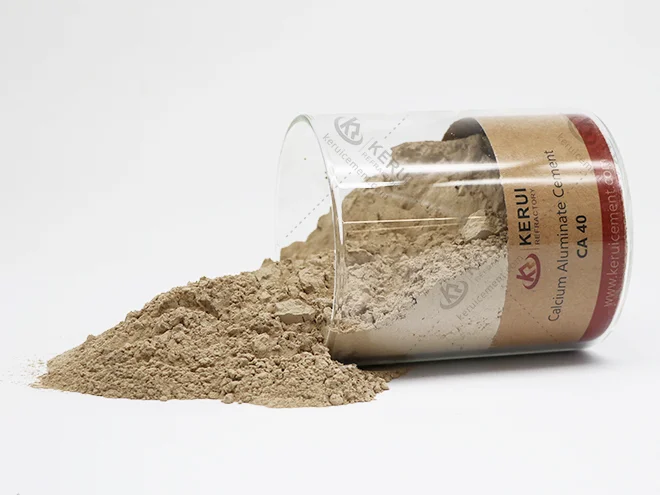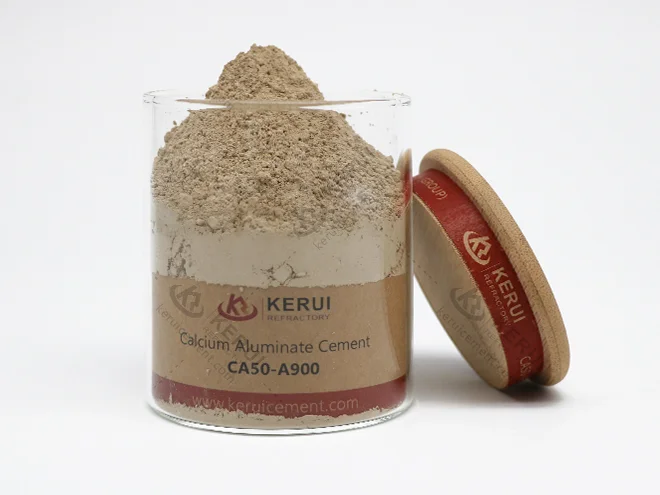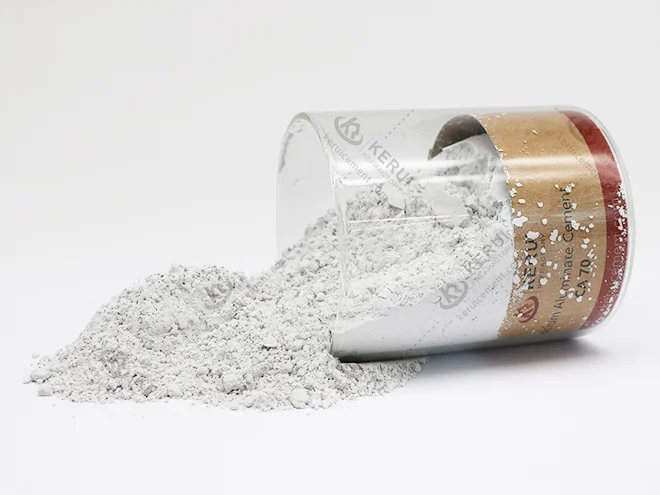
Refractory Cement CA40 For Building Chemistry
- Al2O3(%): 37.0 - 41.0
- CaO(%): 36.0 - 40.0
- Compressive Strength (72hrs) (MPa):55-65
- Final Setting Time (min): 100-180
- Certification: ISO9001/ISO14001/ISO45001/ISO50001
- Refractory Cement CA40 For Building Chemistry
Description of Refractory Cement CA40
Calcium Aluminate Cement (CAC) CA40 is a specialized type of cement known for its rapid hardening and high resistance to chemical attacks. It contains a higher proportion of alumina and less lime compared to traditional Portland cement. This makes it suitable for applications where early strength development is crucial and where exposure to harsh environments, such as high temperatures or acidic conditions, is expected. Its properties are ideal for use in industrial floors, repair works, and high-stress applications.
Features:
Rapid Hardening: CA40 typically gains strength much faster than ordinary Portland cement.
High Temperature Resistance: It can withstand high temperatures, often up to 1,200°C (2,192°F).
Chemical Resistance: CA40 exhibits excellent resistance to chemical attacks, including acids, sulfates, and alkalis.
High Strength: It generally provides higher compressive strength at early stages compared to conventional cements.
Application:
CA40 is commonly used either alone or in combination with other hydraulic binders, fillers and polymers in many formulated products. These include products for floor preparation (self levelling compounds, screeds), tile laying (adhesives, grouts), rapid repair or assembly of materials (e.g. non shrink grouts). High resistance to waste waters in combination with extraordinary abrasion resistance and high re- sistance to biogenic sulphuric acid corrosion (BSAC) makes CA 40 an ideal product for sewer systems and waste water plants.
Kerui Refractory Cement CA40
Chemical Analysis
| SiO2, % | Al2O3, % | Fe2O3, % | CaO, % | MgO, % | TiO2, % | R2O, % | S, % | CL, % |
|---|---|---|---|---|---|---|---|---|
| < | > | < | < | < | < | < | < | < |
| 6 | 37 | 18 | 41 | 1.5 | 3 | 0.5 | 0.1 | 0.06 |
Typical Physical Properties
| Methods | Units | Usual range | Specification limit | |||||
|---|---|---|---|---|---|---|---|---|
| Finess | +45μm, % | - | <15 | |||||
| S, m²/kg | 350-400 | >300 | ||||||
| Setting Time | IS | 60-130 | >45 | |||||
| FS | 100-180 | <240 | ||||||
| Strength (ISO) | Flexural Strength, Mpa | 6h | - | >4.0 | ||||
| 1d | - | >5.0 | ||||||
| 3d | - | >6.0 | ||||||
| Compressive Strength, Mpa | 6h | - | >30 | |||||
| 1d | 50-55 | >50 | ||||||
| 3d | 55-65 | >55 | ||||||
| Workability / Spread after 15 min, % | - | >30 | ||||||
| Refractoriness, ℃ | 1750-1800 | |||||||
| Workable time | Moderate | |||||||



